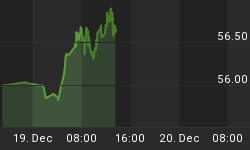It is widely believed that the Federal government has an unofficial policy that some banks and other financial institutions are simply too big to fail. As a result, it is assumed that the government will take any action necessary to ensure that they do not. It now appears to me that there is a similar doctrine in effect for bubbles, in that some are simply too big to burst. Housing, which is the lynchpin holding together the entire U.S. economy, certainly fits that category. To paraphrase Winston Churchill "never in the field of economics has so much been owed by so many to just one thing."
Through the wealth effect and cash-out equity extractions, the housing bubble has enabled Americans to consume far beyond their collective means. The result is a bubble economy, where incomes, jobs, tax revenue, corporate earnings, and the solvency of our lending institutions, are all dependent upon sustained, stratospheric home values. When prices return to earth, the economic impact will be catastrophic.
This dismal reality is certainly not lost on those in Washington. The only way for housing prices to stay high is for the Fed to keep inflating. Conveniently, the captain currently at the helm of the monetary ship of state just happens to be Ben Bernanke, who as a Fed governor spoke about the Fed's ability to fend of deflation by using the handy invention of the printing press. Though his words may have may have spoken in reference to consumer prices, his actions will certainly be concentrated on asset prices, especially housing.
Like a lounge club magician, the Feb distracts the audience with short-term rate hikes, while behind its back it monetizes long-term government bonds. It creates the illusion of its being an inflation fighter, while in reality it is an inflation creator. No wonder it wants to further cover its tracks by no longer reporting M3!
What other explanation is possible after Wednesday's bond rally following an unexpected .7% rise in January consumer prices, which amounts to an annualized rate of inflation of almost 9%? Even if one takes a more moderate look at the year over year rates, the CPI has risen 4%. Why would anyone buy ten-year government bonds yielding 4.5%, when the real after-tax yield, adjusted for 4% inflation, is negative 1%? Other than leveraged short-term speculators, the only buyer would be the Fed, which has an agenda other than investment merit.
My guess is that the Fed's goal is to keep long-term interest rates low long enough to allow millions of homeowners to refinance their adjustable rate mortgages into 40 or 50 year fixed-rate loans, and to create enough inflation to cause nominal incomes to rise sufficiently in order to enable homeowners to make higher debt payments and prevent nominal home prices from collapsing.
However, while the use of the old-economy technology of the printing press may allow the Fed to prevent nominal home prices from falling, it can not accomplish the same feat with respect to real home prices, which will plunge as the relative price of everything else surges. The danger is that the controlled inflation the Fed is attempting to manage turns into a wild fire, with implications far worse then the mere severe recession it is attempting to postpone. But since their immediate political concern is the next election, that is a risk they are willing to take. Unfortunately it is their constituents that will bear the costs if the gamble fails.
The U.S. dollar will likely be biggest casualty of this scheme and the gold the biggest beneficiary. To learn the best ways to get out of the dollar download my free research report available at www.researchreportone.com and subscribe to my free, on-line investment newsletter at http://www.europac.net/newsletter/newsletter.asp. To discover the best way to buy gold, visit www.goldyoucanfold.com.















